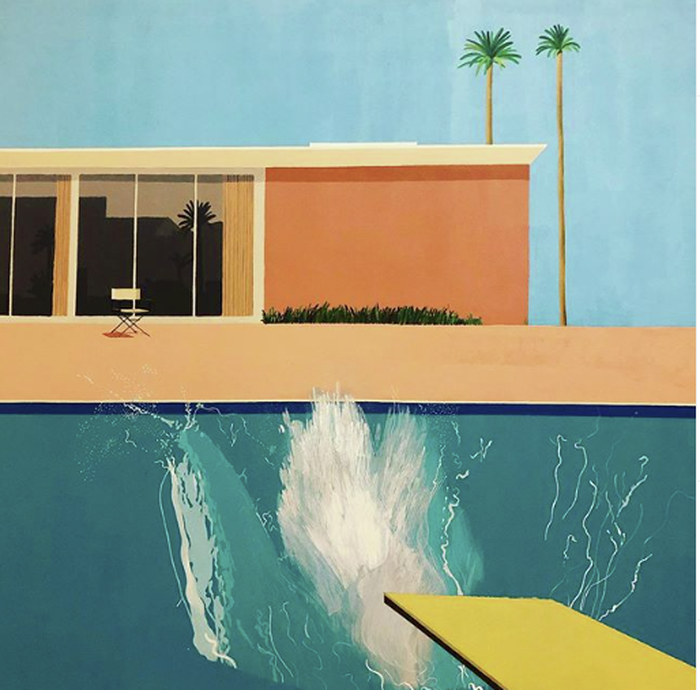Club Nights, Cabarets and Creatives: Why art about nightlife is essential to us now
In the second instalment of her column, Alice Bergin explores the relevance of art and nightlife in creating communal spaces
Under current circumstances, it might seem peculiar that artists often turn to nightlife in times of national crisis. Clubland offers little consolation to a society in which close human contact is a potential threat and yet, from the hedonistic playgrounds of 1980s America, to the controversial cabarets of Post-War Germany, artists have obsessed over the nightclub. Realised as colourful incubators for the growth of subcultures, clubs and cabarets enthral artists intrigued by the literal and figurative ‘underground’, but what do they mean to a generation consistently being reminded to stay apart?
“Nightclubs and cabarets have consistently been identified by artists as spaces of community and belonging.”
Zurich’s famous ‘Cabaret Voltaire’, as in Marcel Janco’s painting of the same name, was founded in a backroom as the dust settled after the Great War and led to the cultivation of the anarchic art movement known as ‘Dada’. Refugees that had fled to neutral Switzerland found this ‘centre for artistic entertainment’ a safe space for them to mix with likeminded creatives. The advertisement that ‘young Zurich artists, of all tendencies, are invited to join us with suggestions and proposals’ was a welcome offer to asylum-seekers otherwise dismissed to the fringes of Swiss society. Clubs thrived under similar circumstances in New York during the Prohibition years. The arrival of a wave of African Americans fleeing persecution sparked the opening of blues and jazz venues throughout Harlem. Painter Aaron Douglas was one of many to find the Harlem club culture a fertile source of artistic inspiration. His graphic club interiors nourished a wider movement of creatives redefining identity, rejecting prejudice and ultimately instigating change.
The most famous marriage of art and club culture must be the painter Toulouse-Lautrec and the iconic ‘Moulin Rouge’ cabaret in Paris. By contrast, the venue did not emerge from political or economic gloom but instead blossomed garishly during a period of optimism, progress and cultural enthusiasm – the ‘Belle Epoque’. Championing the values of beauty and pleasure, the extravagant ‘Red Windmill’ might not at first appear inviting to those existing on society’s edge. The aim, however, was to establish a vibrant atmosphere - complete with an elephant statue of ridiculous proportions – in which all walks of life could intertwine. Fast, modern dances and bustling champagne evenings ensured that visitors were caught up in a whirlwind, in which the frontiers between workers and gentlemen, Parisians and foreigners, were temporarily blurred. Much like the ‘Cabaret Voltaire’ and the jazz clubs of Harlem, the ‘Moulin Rouge’ became adored by artists for its existence as a platform in which social boundaries no longer seemed to exist.
Fast forward to the 1980s, and Peter Gatien, a mysterious, eyepatch-wearing businessman, reigned as the ‘King of Clubs’ in New York. His venues, designed with the assistance of the likes of Jean-Paul Gaultier and Thierry Mugler, were works of art in themselves. ‘Club USA’, for instance, featured a myriad of neon signs and a massive tube slide that led down to the dance floor. ‘Limelight’ was a desecrated church. Gatien operated under the philosophy that clubs created and fuelled culture. Like the artists that came before him, he recognised his establishments to be platforms for those who felt that they were on society’s periphery, notably the LGBT community. He was on a mission to craft a setting in which individuals of any description could interact. In an average crowd of ‘40 per cent gay, 60 per cent straight’ clubbers, Gatien noted that the environment he had created dissolved social stigma. Having regarded each other with hostility, groups that were otherwise partitioned by social boundaries did not just coexist, they were bonded by their shared experience in this unique space of integration: ‘it was more than just that they tolerated each other – they actually enjoyed each other’s company’.
While more recent depictions of urban nightlife, like the photography of Dave Swindells and Teddy Fitzhugh, might seem to find inspiration elsewhere, the principals at the heart of them have not changed. Nightclubs and cabarets, then and now, have consistently been identified by artists as spaces of community and belonging. In the wake of Brexit and Trump’s repeated references to ‘the Chinese flu’, the world often seems to be building walls rather than dismantling them. While clubs may be shut, they are nevertheless vital as an enduring icon of the necessity of bringing disparate people together.
 News / Caius mourns its tree-mendous loss23 December 2025
News / Caius mourns its tree-mendous loss23 December 2025 Comment / Yes, I’m brown – but I have more important things to say22 December 2025
Comment / Yes, I’m brown – but I have more important things to say22 December 2025 Interviews / Politics, your own way: Tilly Middlehurst on speaking out21 December 2025
Interviews / Politics, your own way: Tilly Middlehurst on speaking out21 December 2025 News / King appoints Peterhouse chaplain to Westminster Abbey22 December 2025
News / King appoints Peterhouse chaplain to Westminster Abbey22 December 2025 News / Clare Hall spent over £500k opposing busway 24 December 2025
News / Clare Hall spent over £500k opposing busway 24 December 2025









